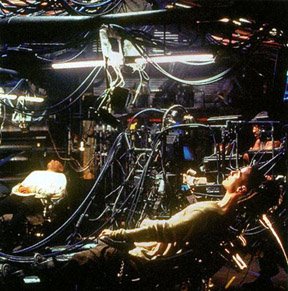Reprieve for Grade 12 Graduation Portfolio Guinea Pigs
 After a Ministry sponsored and facilitated graduation portfolio forum, held on May 1st 2006, teachers, administrators, and parents made some joint recommendations on a variety of portfolio topics.
After a Ministry sponsored and facilitated graduation portfolio forum, held on May 1st 2006, teachers, administrators, and parents made some joint recommendations on a variety of portfolio topics.At no time was there any indication that the first wave of 2006/2007 grade 12 students would be given a reprieve, despite concerns expressed about the ability of some grade 12 students to complete the portfolio, and consequently to graduate.
Shortly thereafter, on May 12th, the Deputy Minister of Education, Dr. Emery Dosdall, issued a Report on Education on the Portfolio that consisted largely of a BC Graduation Portfolio PR plug. Since then, the Ministry of Education staff have added significant resources to its ministry portfolio resource website, a website with student sample portfolios, and two days ago, the Minister of Education, the Honourable Shirley Bond, announced a reprieve for the grade 12 students. This was reported on the CBC, and Ministry staff have been scrambling to explain what this announcement means.
Why the sudden change of heart and why was this announced in the middle of summer when teachers, school staff, students, and parents are not in communication with one another and are unable to clarify what the local school ramifications that such a reprieve will entail? While the reprieve is appreciated by many grade 12 students who have not had a fair chance at completing the requirements or getting school support, it is not clear what led to this being an 11th hour decision, and whether this information was new or was already known on May 1st. It is also not clear what the full scope of the complexities this annoucement will have on the grade 12 students as they come to grips with decisions that they have to make in the fall. How will their graduation course requirements change? What required course will have to be taken to graduate should students opt out of the portfolio process? And, what about the grade 11 portfolio course that many of them were forced to take?
What were some of the potential issues with the Portfolio? Here is a list of ten things that I hate about the graduation portfolio. Well, perhaps hate is a strong word but this roller coaster ride is definitely starting to make me gag.
1) The schools and the Ministry have not demonstrated the relevance of the portfolio to students by providing real examples where portfolios are used and where they are not used. If any employer in Nanaimo uses the portfolio, I challenge you to post it on this blog along with your specific portfolio format requirements!
2) Some schools are turning this process into a spoon feeding exercise where the teachers choose the choice aspects for the students rather than providing the students with choice. This, I’m sure, makes it easier for teachers and administrators to revert to the teaching model that they are most comfortable with. In the classic analogy, if all you have is a hammer everything looks like a nail - for many teachers this means classroom lectures is the only means of learning - thus, completely losing sight of the Ministry statement: “Rather than a course, the Portfolio is a three year process where students work in a self-directed fashion.” Spoon feeding students takes away the best thing about the portfolio which is to allow students to take ownership of the portfolio process.
3) The objective of the graduation portfolio is to promote the graduation portfolio as stated in two of the presentation evaluation criteria:
- Demonstrates meaningful reflection on the portfolio process and learning.
- Demonstrates meaningful reflection on the Graduation Portfolio experience and how it might affect future life choices.
Students have been told that this means they have to say something positive about the graduation portfolio. In other words, the students are there to “sell” the portfolio to the community members and make sure the school looks good regardless of how their experience with this process was. Furthermore, the focus of these criteria is on promoting the portfolio process not the reflections on the students’ achievements.
4) The portfolio process has no specific objective that students can target their portfolio content towards. For example, the portfolio is not being presented to an employer for a specific job or as an application for a scholarship. As it stands, it is a disparate collection of checked items that need not have a concerted objective other than to promote the BC graduation portfolio program (This has been built into the presentation evaluation criteria, see #3), and to artificially fabricate, in each student, the averaged profile of a successful student.
5) I would like to see it as a requirement that every teacher, administrator, and Ministry staff have a publicly available electronic portfolio on the e-portfolio system that is being forced on students. Then maybe the teachers and schools who are mandating the use of the e-portfolio can rethink mandating a single electronic medium on students. Besides, if the software was of good quality, user friendly, and offered the students what they wanted, they would be flocking to use it for their portfolio.
6) There is generally a lack of school coordination on record keeping policies and procedures for the graduation portfolio, and insufficient staff training on what these are. This means that there is a high likelihood that records and assessments over the three years will be lost; this has already happened in our district.
7) The May 12th deputy minister’s report on Education states:
“We heard concerns about the limitations of provincial exam marks and the need to assess student performance in relation to other important skills needed for success in life”.
The Ministry heard the concerns about the limitations of provincial exams marks and subsequently created more marks rather than a process. They don’t seem to get it: you cannot reduce the sum total of an individual’s accomplishments to a number and not introduce a significant limitation in assessment. The argument will be made that they are now assessing, using marks, “other” skills besides those measured by conventional provincial exams.
8) Another statement in the same report states: “Change is never easy, and the quality of implementation for any new educational program improves dramatically in the first several years after start-up.” The grade 11 and grade 12 kids have been written off as the first pancakes that you always throw out; despite the reprieve this has been a terrible experience.
9) His further statement: “this innovative assessment and learning tool adds to our worldwide credibility as a public education system.” has taken what was an innovative idea and transformed it into just another course with a grade. It would have been truly innovative if it were a complete/incomplete process. Think about it, when post-secondary institutions are determining grade cut-off points do you really think that they are “not” going to be using the portfolio grade? It is far more costly from the perspective of time and effort to actually review a portfolio and even more costly to set up a time to have students present their portfolio.
10) Why was the portfolio not phased in earlier as optional, thereby building and learning from the successes of students and teachers who were motivated to undertake the portfolio process? This would have reduced the tremendous amount of stress the current grade 12 students, their parents, and school staff have been going through in the last two years in the mad scramble to get an unfunded, complex, and rather unfamiliar initiative off the ground. As it stands, the stress levels of school staff will be even higher in September as they try to explain to students that the portfolio is going ahead, but not quite, or even worse some schools likely will push to make it mandatory despite the announcement, with some schools tying the portfolio to the passport to education and others not. Where is the equity in this?
I could list more items...but ten is a nice round number.
Previous post on the Graduation Portfolio
Labels: Graduation Portfolio


